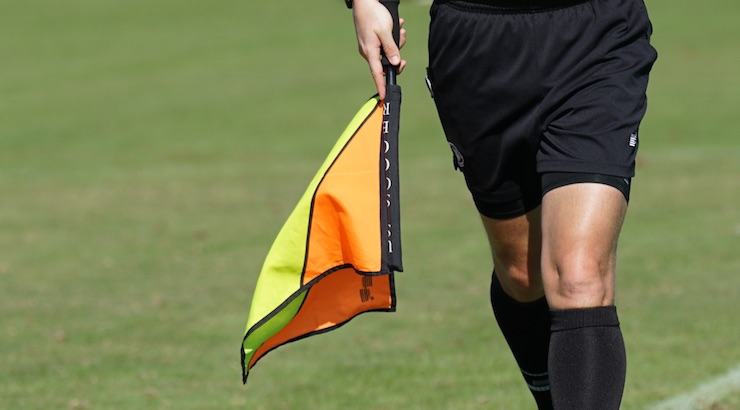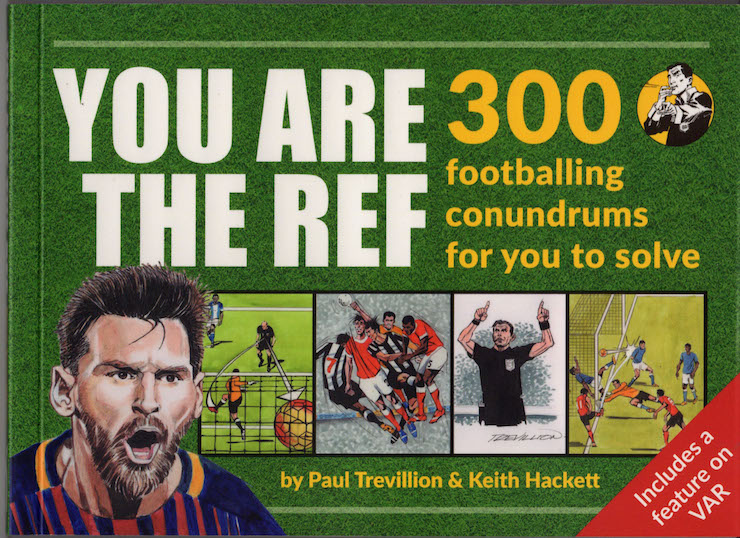Keith Hackett on Avoiding Arrogance & Being A Great Referee
Soccer News: Referees are often challenged when faced with an angry player and I want to offer some suggestions that may aid your control and enhance your authority.

Advice for Referees on How to Avoid Conflict
Well, first of all, it takes two to create an argument once you have given your decision.
Standing admiring it and congratulating yourself on what a great referee you are sends out a signal of arrogance and will stimulate players to argue with you.
Referees should be Confident – NOT ARROGANT
To avoid the one-on-one conflict with a player or a fan follow these three steps:
- Make your decision,
- Give a clear directional signal
- Move on out of the area of the offense.
Yes, moving away from the scene will reduce the potential for conflict and player protest.
When You Award Penalty Kicks:
When you award a penalty kick you will receive some protests, usually from more than one player.
Here is what you should do:
- Whistle loudly, point and move towards the penalty mark, this movement and action demonstrate to players and spectators that you are confident about your award.
- If a group of protesting players move towards you, stand still, hold your ground and lean slightly forward holding both your arms out with palms facing in a stop signal.
- If any player out of the group continues to protest. Then show the Yellow card.

Warning A Player:
You might be faced in a game with the need to warn a player about his conduct.
Here you need to operate a clear process:
- STEP ONE – Without stopping the game, move alongside the player warning him about his conduct. This can be a short verbal exchange, You may have to warn the player about his tackling, use of the arm, or verbal comments towards you.
- STEP TWO – Stop the game and now apply a visual public warning to the player.
- Use the triangle method and avoid this “Come here I want to talk to you” –Instead request the player to join you.
- With you at POINT A of the triangle and the player standing directly opposite you at POINT B, invite the player to join you at POINT C of the triangle.
- Now inform the player, “That you want to see an improvement.” No threats – No “Next time you do that, I will caution you” statements.
- STEP THREE – Use the Captain of the team, suggesting that his player needs to calm down.
- NOTE: Clearly, the Laws of the game do on occasions require you to issue a caution immediately after an offense has been committed.
- STEP FOUR – issue sanction.
Related Soccer News: REFEREE LEGEND KEITH HACKETT ON SOCCER







